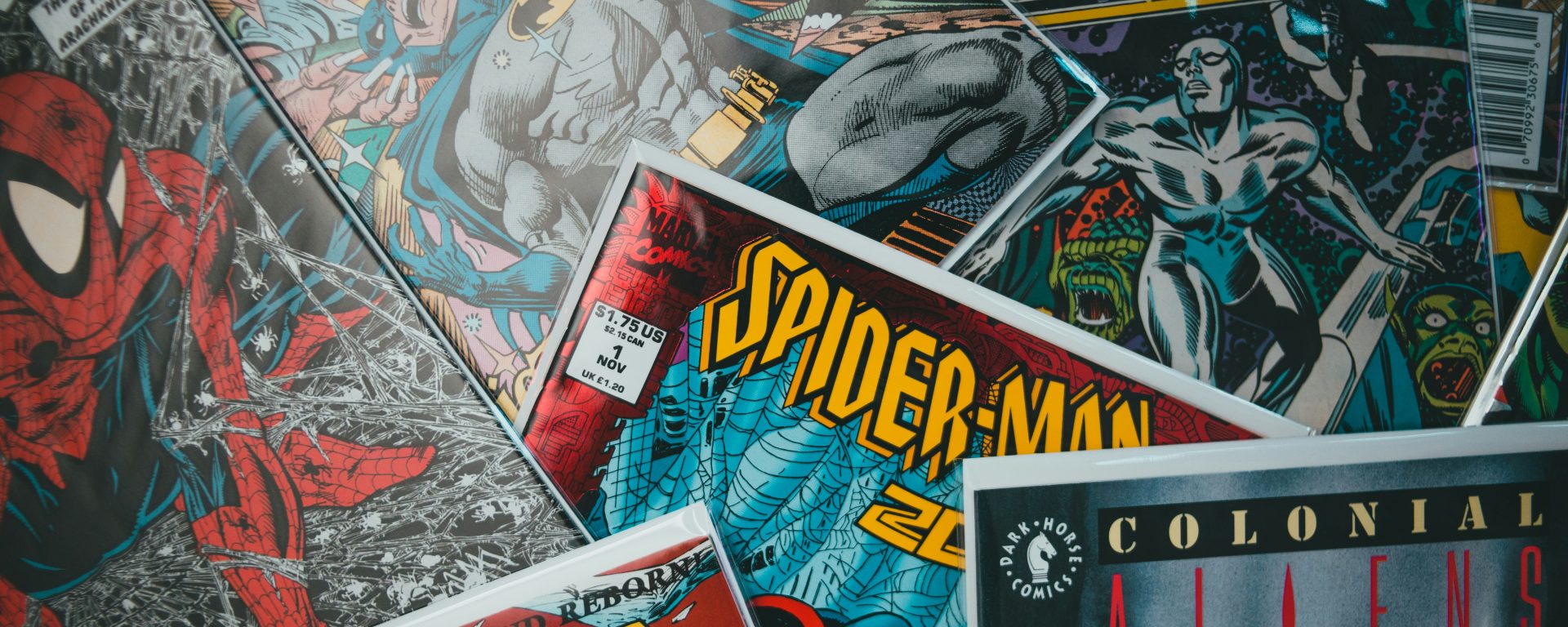$160 million in revenue. 167,000 attendees. 1,000+ exhibitors and panels. One location.
These are just some of the statistics of the San Diego Comic Convention, the world’s most well-known comic book and pop culture convention, over the past decade. This convention also goes by several names, including Comic-Con International: San Diego, San Diego Comic-Con, and SDCC.
After I started law school, I began exploring intellectual property as a practice area. I soon became curious about whether the comic conventions I attended and the intellectual property worlds I studied ever collided. After some researching, I learned that SDCC indeed did.
At the bottom of their webpage, SDCC lists its own intellectual property rights. It states “Comic-Con®, the Comic-Con logo, and the WonderCon logo are registered trademarks of San Diego Comic Convention.” As someone who’s been to various other pop culture and comic conventions like L.A. Comic Con and Comic Con Revolution, I wondered how these other conventions were able to use the word, “Comic-Con,” if it is trademarked and what that means for SDCC as a business.
Because SDCC is a powerhouse in the entertainment industry, I can imagine protecting their intellectual property rights and cultivating their brand image is critical for establishing such a strong and reputable presence.
Defining a Trademark
Trademarks, or service marks, encompass any words, symbols, phrases, designs, or a combination of those factors that identify goods or services used in commerce. Essentially, trademarks help consumers identify the source or owner of the product or service they are using, such as the Nike Swoosh logo. Trademarks allow said company the right to prevent others from using similar or same marks on their goods/services if that would cause consumer confusion.
During my intellectual property class, I learned about a public databank called the Trademark Electronic Search System (TESS). TESS allows individuals to search “registered” trademarks with the United States Patent and Trademark Office (USPTO), a federal agency that grants U.S. patents and trademarks. A registered trademark, such as Comic-Con®, grants the owner numerous benefits, including the presumption of a valid trademark and the ability to bring a lawsuit regarding the trademark to federal court.
Searching for Comic-Con
Using TESS, I first conducted a general search on the word Comic-Con to see what I would find—thirty-three results appeared.

This search included the mark “Comic-Con” as well as geographical variations of it (i.e., Anaheim Comic-Con®, Grand Rapids Comic-Con®, RI Comic-Con®, LA Comic-Con®, San Francisco Comic-Con®). Surprisingly, not all of them belong to SDCC, which means that SDCC has competition surrounding the use of the Comic-Con trademark.
After clicking around, I then found SDCC’s earliest filing of the word Comic-Con in 2005 for education and entertainment services, which included “organizing and conducting conventions in the fields of animation, comic books and popular art.”

Another observation I made in my search was just how simple the design of Comic-Con looked, as it was just the word. This type of registration is called a Standard Character Mark, which meant the protection is just on the word, and not on any design. The registration of a Standard Character Mark (not stylized) provides the broadest form of protection such that any future designs or logos created by SDCC with those words would be protected.
For example, the Comic-Con trademark registered by SDCC shown below, is a logo with an eye, along with the word Comic-Con adorning the side. Because SDCC registered the words first, they were able to expand upon their brand by developing a unique logo with their pre-existing trademark years later.

Then, I investigated one of the trademarks at a geographical location, RI Comic-Con (see below).

The RI Comic-Con mark is notable because it incorporates design elements, which is explained by the section in the screenshot above called “Description of the Mark,” or the drawing of the mark. The logo includes the purple and yellow colors, the capitalized block-style and lower-case style letters, the gray shadows, and the stylized Comic-Con word. Compared to the Comic-Con mark registered as just the word, the RI Comic-Con® mark consists of the whole design.
With this kind of protection, Altered Reality Entertainment, the owner of this trademark, can only advertise their events with such logo in its entirety. They cannot use the word Comic-Con on its own, nor can they make any attempt to claim it as their own, which restricts their usage of the word in terms of how they brand themselves.
I saw there was a Disclaimer not previously mentioned in the Comic-Con screenshot: “No claim is made to the exclusive right to use “Comic-Con” apart from the mark as shown.” In other words, Altered Reality Entertainment does not have exclusive rights to Comic-Con. Since Comic-Con is a registered trademark of SDCC, perhaps this would explain why Altered Reality Entertainment would need to incorporate a Disclaimer, as SDCC is the one who owns that trademark.
Next, I looked at LA Comic-Con, another mark filed by SDCC. This mark also included a disclaimer concerning the lack of an exclusive right to use “LA”—meaning, SDCC is not able to claim the word LA as part of their own trademark. This makes sense because “LA” is a geographical location, short for Los Angeles, that usually cannot be trademarked. This is done to protect businesses operating in that area to be able to use LA without fear of a lawsuit. Although there is a LA Comic-Con trademark, the mark does not seem to be affiliated with the actual L.A. Comic Con event because the corporate affiliation is Comikaze Entertainment, Inc. and not SDCC.

It is rather interesting that SDCC would register their Comic-Con trademark in a location they do not have ties with, as they primarily operate their conventions in San Diego and Anaheim.
However, according to the above research, it seems like SDCC has been developing and expanding their intellectual property rights such that other conventions would need to be cautious about how they choose to advertise themselves.
Protecting a Brand
To continue protecting their brand and image, it makes sense that SDCC is serious about expanding their intellectual property rights. Though there are many comic conventions across the United States, there is only one San Diego Comic Convention.
Every year, thousands of fans log into a lottery system just for the chance to get into this convention—tickets are typically sold-out. In the past couple of decades, the arrival of high-profile celebrities and massive film and television industries has led to an explosion in attendance. SDCC’s longstanding history has certainly contributed to its influential position in the pop culture arena.
Generally, businesses strengthen and protect their brand by registering trademarks. The more people associate Comic-Con with this highly sought after experience, the greater the convention grows in value and recognition. When people see the term Comic-Con, they will immediately think about one of the largest conventions in the world—not Rhode Island Comic-Con, not San Francisco Comic-Con, but San Diego Comic-Con.
SDCC has registered various other trademarks like Comic-Con Demand and Comic-Con Museum. They could be trying to create a “family of marks,” such that each successive Comic-Con® trademark would continue to strengthen the—“Comic-Con” as a brand related to SDCC.
For example, when we see words like iPad, iPhone, iTunes, we immediately think about Apple. When we see words like McChicken and McNuggets, we immediately think about McDonald’s. In these cases, we automatically associate family of marks such as “i-“ and “Mc” with a certain goods or services. The goal for SDCC is that when people see the word Comic-Con used within a mark, they think about.
Now, with the Comic-Con trademark, not only can SDCC use this word, but also SDCC can bar confusingly similar uses and license it to some. After a lawsuit about the Comic-Con trademark, the court recommended organizations bearing the word Comic-Con® to either officially change their name or enter into a licensing agreement with SDCC for permission to earn revenue off of their trademark.
Through these licensing agreements, SDCC receives revenue while still being able to maintain exclusivity over its trademark. Even though other conventions are using the Comic-Con mark, they are only able to use it with SDCC’s consent, allowing SDCC to grow its business and its popularity through these partnerships.
Moving Forward
Whatever legal disputes lie ahead, one thing is for certain; SDCC is continuously fighting to protect their intellectual property rights, and their efforts have been paying off. While there are many yearly conventions that draw in crowds of pop culture, comic, and entertainment enthusiasts from across the United States, San Diego Comic Con reaches fans from around the world and has made itself an unforgettable experience. When people see SDCC’s name, it will either bring forth a wave of nostalgia for previous attendees or encourage new ones to attend this convention.

Ashton Yeh (they/them)
Associate Blogger
Loyola University Chicago School of Law, J.D. 2025
